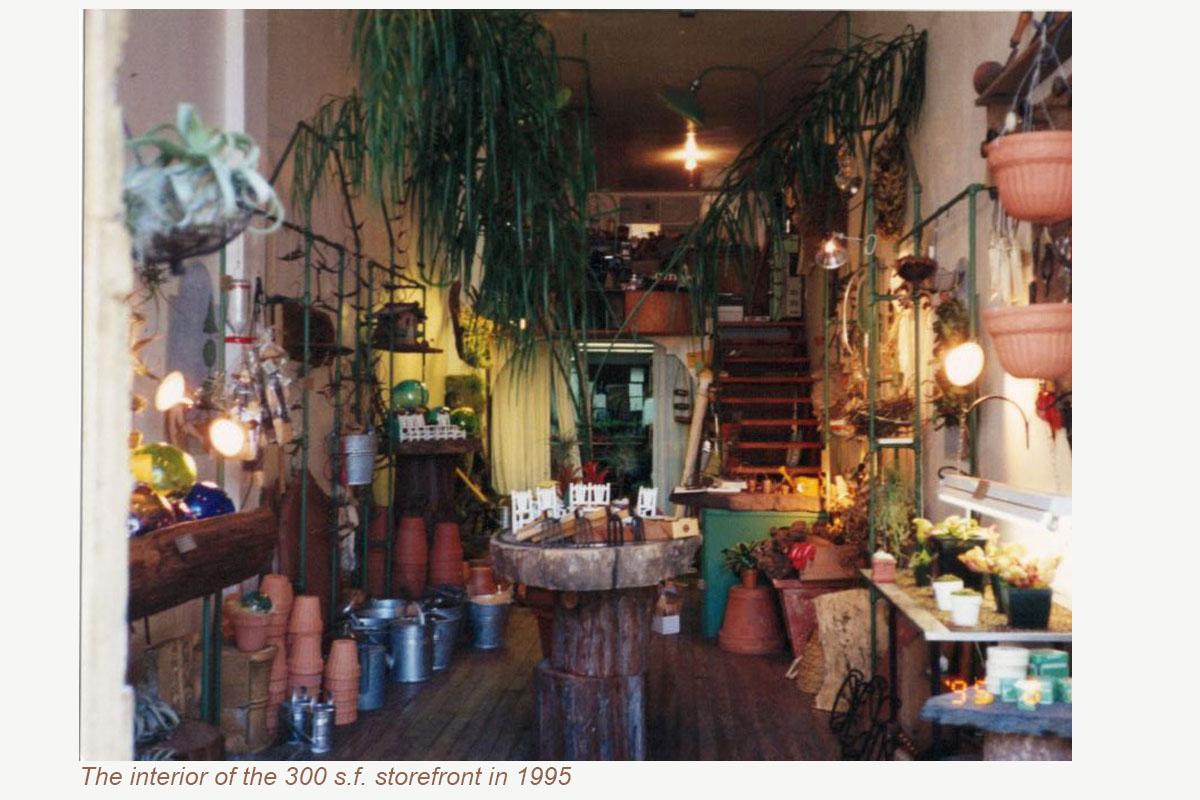Paxton Gate, The Early Days | |
Twenty-nine years ago, Paxton Gate opened in a tiny storefront in an alley, off an alley. I’d describe the early incarnation of the store as a quirky gardening store with a nod toward Victoriana, hence our namesake, Sir Joseph Paxton. (More about him later). Soon after opening, we started publishing The Paxtonian, which we haughtily described as a “periodical." Whether or not it deserved that designation, or was merely a newsletter, is debatable. However, by the time we printed our fifth and final issue in April of 1995, we had proudly amassed a readership of over 1000 expectant fans, to whom we snail-mailed the printed gazette. I never fully abandoned the idea of starting it up again, but like many things in the world of small business—or life for that matter—it got set aside, again and again over the years. I’ve always enjoyed writing and sharing my discoveries and experiences with others. So, I’m happy to announce that The Paxtonian is back, and I’ll be presenting it digitally this time. This is our first issue … or perhaps, I should say, it’s our sixth issue! |  | The Paxtonian will introduce readers to the strange and wonderful oddities, characters, and stories that we encounter nearly every day in the world of Paxton Gate and will delve back into stories we’ve experienced since opening in that little alley so many years ago. If you’re a connoisseur of curious things or simply fascinated by odd and wonderful objects, then you, too, may be a “Paxtonian.” I hope you enjoy these things as much as I do. | | |
|
On occasion I’ll bring back an article from the original Paxtonian. Here I’m including the first, painfully verbose, piece I wrote in my mid-twenties about our brilliant and exceptionally talented namesake, Sir Joseph Paxton. Paxton is best described as a “Victorian Gardening Engineer” and worked in the fields of horticulture, architecture, and mechanical prefabrication, to name just a few. A runaway in his youth, he rose from the depths of potential vagrancy, to being knighted by the Queen of England. His most exalted work, the Crystal Palace, was a perfect fusion of organic form and functional design, included the first mass use of prefabricated materials, and was the largest glass building ever erected at that time. Some contend it was the precursor to the iron-framed, curtain-walled buildings of the 19th and early 20th centuries, leading eventually to the advent of skyscrapers. | |
|
Described as the “Busiest Man in England,” Paxton was tremendously talented, primarily self-made, a tireless creator, and I’m proud to have his name as part of ours. Read my full original article, if you dare.
The ensuing years at Paxton Gate saw an evolution of our offerings from quirky gardening store and eventually to the oddities emporium you see today. Where plants were the seed from which the concept grew, insects were the catalyst that propelled us into other fields of the natural sciences, including fossils and minerals, taxidermy, preserved specimens, osteology, and more. The insects first crept into the into the scene as a few colorful beetles and butterflies embellishing a hollow tree trunk we used for displaying merchandise.
| |
|
Soon thereafter we taught ourselves how to “relax” the specimens (using either humidity or warm water, depending on the type), and pin them into desired poses eventually leading to teaching insect spreading classes. In those early days, in that little shop in the alley, passersby would first be surprised that there was a store there at all, and then they’d gawk at the framed insects covering the wall. Although, we were still clearly a gardening and plant store, the insects stole the show, so much so, that people started calling us “The Bug Store.” Paxton Gate was always rooted in the natural world, but when I saw my customers’ original fascination with beetles and butterflies, I made the intentional decision to dive headfirst into the eccentricities and ephemera that we’re known for today.
There are so many stories associated with this deep dive into the peculiar world of Paxton Gate; I’m looking forward to sharing more of them with you in our next issue.
—Sean Quigley, Founder
| |
|
Comments, ideas for articles, or inquiries? Email us at info@paxtongate.com.
| |
|
Copyright © 202 Paxton Gate, All rights reserved.
You are receiving this email because you signed up for a class or opted in to our mailing list.
| | | | |